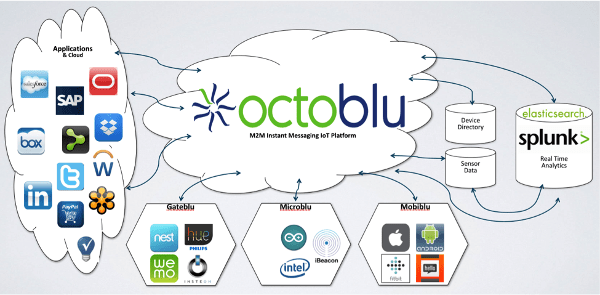Dumb pipe or not, data services thrive mainly out of the telecom world these days.

Telecom Services are an interesting notion. For over a hundred years we’ve been taught that Telecom Services=Phone calls. Then messaging was added to it in the form of SMS on mobile. Telecom services themselves assume that their role in life is to sell us our communication services.
This is no longer true.
I remember working on 3G-324M. A circuit switched video protocol, now dead to the world at large. In many of my discussions, people complained about their inability to add services on top of what a carrier provided – there were too many layers of debilitating bureaucracies.
Today? Everything operates over an IP network. Most of us don’t even care if it is cellular, landline, wireless, or whatever – as long as we get our bits on the line – we’re happy.
While we are all happy using VoIP services and discussing how disruptive it is to carriers, we haven’t seen nothing yet.
The wheel has turned. In the past, advantage lay in owning the network and offering managed services on top of the network. Today, and moving forward, advantage lay with those who can operate their service across networks.
This means that carriers are left with their own network, and a DNA of working inside their own managed network – something that makes it harder for them to operate in this new reality.
Here are two areas that drive the message home:
#1 – Google Fi
Google Fi is how mobile phones should operate. It is Google being an MVNO and offering mobile plans to its customers. Instead of buying a plan (and maybe a subsidized handset) from a carrier, you can just purchase a plan from Google – and use a Nexus smartphone.
What makes Google Fi so different is that it operates on 3 different networks:
- Sprint
- T-Mobile
- Any Wi-Fi it can get connected to
Read the FAQ for this one – it is quite telling.
Here’s one piece of it:
What happens if I start a call over Wi-Fi and then lose my Wi-Fi connection?
On your Project Fi device, if you start a call over Wi-Fi and then your connection weakens or drops (such as when you leave your home or office), Project Fi seamlessly transitions your call to a cellular network (if one is available) so you can keep talking.
Calling is no longer tied to a cellular network. Fi has 2 cellular network and whatever Wi-Fi you happen to be on. And it decides what to use based on past experience of Google – and is able to change that dynamically mid-call.
Fi is not your typical MVNO. Or your typical VoIP provider. Or your typical carrier.
It is just how things should be.
#2 – Internet of Things
The Internet of Things to me is everything but a carrier. The hint to that is in that first word – Internet. You don’t really need a carrier for that – just an IP connection. Any IP connection.
While there are use cases that will necessitate a carrier (or just his SIM cards?), most of them don’t have a carrier as a prerequisite for their existence.
I like this slide of Octoblu – an IOT platform that was acquired by Citrix:

It shows the various players in the IOT space:
- IOT frameworks
- Smartphones (control points of us humans)
- Embedded devices and sensors
- Messaging, aggregation and rules engine for all the data flowing around
- Storage and analytics
- Applications and integration
Nothing about the underlying network. No one really cares what that ends up being. Which makes sense. For this to work, you need an ubiquitous network. Not necessarily one with high bandwidth or no packet loss – but one that you can assume exist. Which is what we have in most of the modern world now.
Final Thoughts
No. This isn’t the end of carriers.
Yes. They will still make boatloads of money.
Much like electricity is a utility, access to the Internet is a utility.
The services on top of it though? They don’t necessarily belong to the carriers.

On Project Fi, I just want to point out that it REQUIRES a Nexus 6P, Nexus 5X or Nexus 6. I’ve been using a 6P and Fi for about 2 months and it has worked well and it’s been cheaper than T-Mobile.
Keith – thanks for sharing.
Here in Israel Fi isn’t available 🙁
I have been wondering about the same topic – carriers making huge amount of money . Though in India it has become very common to first try a Whatsapp Call and if not available make a call to cellular networks and since they manage to keep 3G slightly expensive it’s not always easy to attend VOIP calls on 3G.
Jiten – thanks for sharing